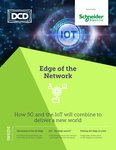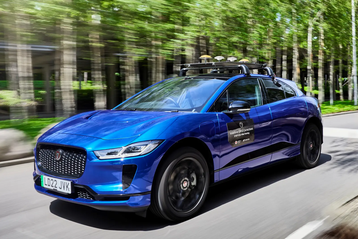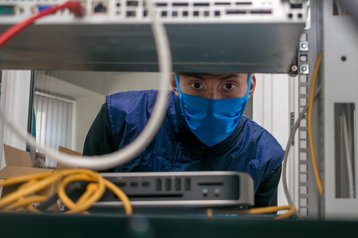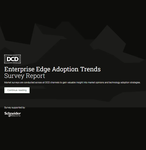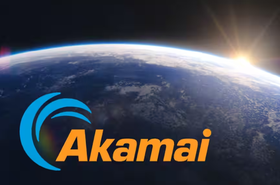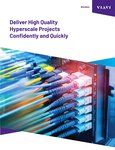For years we’ve heard from industry experts and business leaders about how the Internet of Things will change our daily lives and how we use technology.
Most people use these ‘things’ as they’re called, without realizing it. They include smart appliances which enable you to turn your lights on or off, or even wearable devices, such as smartwatches and fitness trackers.
And the IoT is proliferating firmly at the heart of the Edge. In simple terms, IoT devices gather sensor data and then share it by connecting to an IoT gateway or other Edge device, so the data can be sent to the cloud to be analyzed.
It’s not a recent term either.
IoT origins
The concept of connecting devices to the Internet goes back further than the Internet itself. In 1982, researchers at Carnegie-Mellon University hooked up a modified Coca-Cola machine to Arpanet, one of the precursors of the Internet using the TCP/IP protocol. The machine could report back on its inventory and the temperature of the cans.
The term “Internet of Things” was coined in a speech by Peter T. Lewis, to the Congressional Black Caucus Foundation in Washington, DC in September 1985.
Lewis said: "The Internet of Things, or IoT, is the integration of people, processes, and technology with connectable devices and sensors to enable remote monitoring, status, manipulation, and evaluation of trends of such devices."
This was before Wi-Fi, Bluetooth, and other short-range communications technologies which would eventually make the IoT possible, but the tech industry returned to the idea repeatedly until it started to happen, also using other terms such as M2M - machine to machine.
By 2009, Cisco estimated that there were already more ‘things’ connected to the Internet than people on Earth (then around 6.8 billion).
Today, it’s estimated that there are around 12.2 billion IoT active endpoints globally, according to figures from IoT Analytics, a firm that specializes in market insights for this sector. Humans, meanwhile, have increased to 7.83 billion.
IoT Analytics predicts the number of devices on the Internet will more than double by 2025 to 27 billion.
Is it just hype?
“About a decade ago, IoT became the big new thing and there was a lot of hype,” says IDC IoT industry analyst John Gole.
But have operators fully tapped into the benefits that IoT brings? Gole says that initially, for operators this was a struggle, as there was a lack of an ecosystem in place and the IoT market was in his words ‘immature/’
“All the telcos were rushing in and wanted to take advantage of this big new opportunity, but struggled because it was a challenging environment to be in.”
According to Gole, the mobile network providers felt they had an obligation to drive IoT, and if this was to be the case, the market had to start emerging. At that time, in developed economies, mobile phone use was reaching saturation, and mobile operators were shifting away from just selling mobile phone calls, and offering data instead as the demands for services being texting and calling grew.
Beyond that, once people are using all the data they can, the next logical expansion would be to start connecting devices.
“IoT is not a single use case or single market. Telcos really enjoyed the mobile phone business where essentially everyone in the world needed a mobile phone in the past, but that’s now switched more towards data as demand for this grows.”
His comments echo a report by the GSMA, which effectively says that operators could do more with IoT.
GSMA figures from 2020 estimate that by 2025 the IoT market will be worth a whopping $900bn to the global economy.
However, the same report revealed that connectivity will be worth $48bn, which is just five percent of this overall figure. For context, applications, platforms, and services are tipped to account for 67 percent of the overall market.
According to Iris IoT Solutions managing director Stephen Westley, IoT is the next “golden egg for mobile network operators.”
“Mobile networks are looking at the next revenue stream and IoT is that for them, it’s a golden egg.”
UK-based Iris Solutions provides IoT solutions to its customers, including cold storage trackers, fall sensors, and GPS trackers.
The company works with mobile network operator Vodafone, one of the biggest mobile network operators in the world.
Operators pushing IoT
Despite Westley and others suggesting a vast monetary potential of IoT for operators, are these companies doing enough to tap into this market?
One mobile network operator that has been highly vocal about its IoT and Edge advancements is that name again, Vodafone.
The operator claims to have more than 150 million connections on its global IoT network and has been very active in demonstrating its achievements centered around various use cases.
Whereas a lot of mobile network operators tend to focus heavily on their consumer business and push mobile phone contracts, Vodafone appears to place IoT as a key pillar of its business model.
The UK-based company recently outlined its intentions to develop a new mass-market precise positioning system that can locate IoT devices, machinery, and vehicles.
This scheme will initially be piloted in the UK, Germany, and Spain, and is expected by Vodafone to provide better accuracy than just using only individual global navigation satellite systems (GNSS).
Vodafone claims that location accuracy will improve from a few meters to just centimeters, using Topcon's European network, which is comprised of thousands of GNSS reference stations.
“As new technologies like autonomous cars and connected machinery continue to evolve, Vodafone is providing the critical connections to support these new services with greater precision, more safety, and at scale," said Vodafone Business director for platforms and solutions Justin Shields in early September.
Beyond Vodafone, there are plenty of other examples of operators getting stuck into the opportunities afforded by IoT.
Deutsche Telekom and T-Mobile US recently demonstrated a different type of IoT use case, combining with cleaning technology and equipment company ICE Cobotics to manage its i-Synergy fleet management software.
Using T-Mobile's IoT, ICE Cobotics will connect and manage more than 7,500 new and existing cleaning units worldwide. This will enable its customers to make better decisions based on near real-time data, while reducing downtime through remote notifications, with performance analyzed from a remote location.
MEC tech
Vodafone has also launched its own dedicated program for businesses called ‘Edge Innovation Programme 2.0’, where businesses can test new use cases and roll out smart services and products using Multi-access Edge Computing (MEC) technology.
This form of the Edge, is designed to bring services and processes closer to the user, or “closer to the Edge”, and moves the data away from the centralized cloud and closer to the edge of the network, so a large part of the processing can be done by Edge resources.
MEC is a relatively new segment of the market, but certainly a growing one. So much so, that Gartner predicts that by next year more than 50 percent of enterprise-generated data will be created and processed outside of the data center or cloud. This figure was less than 10 percent in 2019.
Vodafone has worked with Amazon Web Services (AWS) to launch these MEC services delivered with AWS Wavelength for customers in the UK.
Before this, the operator did several trials with companies across a range of areas, including sports technology, autonomous transport, biometric security, remote virtual reality, and factory automation.
Beyond speed and latency capabilities, Vodafone says that MEC also enhances security, with distributed deployments minimizing the impact of cybersecurity incidents, while cost is reduced, and scale offers increased capacity.
Covid boosted IoT use
The global pandemic has played a big part in IoT adoption, adds Westley, who believes that the need for connectivity and instant data has been driven forward as a result.
“One of the things I think that has opened people's eyes to the power of IoT, and especially since the pandemic, is that we don't need to do as many manual tasks anymore,” he said.
“This is the whole point of IoT, as its purpose is around creating efficiencies, and data for people to give them better insights.”
Some might counter-argue that IoT could reduce job opportunities, with businesses instead focusing on automated systems or even making use of robot workers.
However, Westley shuts down this idea, noting that IoT will instead create other roles.
“The growth of IoT means effectively that job specs are changing, and it means that companies can become more efficient. Most businesses at the moment are overstretched and demand-powered, so having IoT, through things such as sensors that can transmit instant data, helps to alleviate some of these problems.”
“IoT isn’t here to replace manpower, it’s here to better analyze data, and diverge focus elsewhere,” he added.
More specifically relating to Edge, Westley adds that IoT needs to work closely with Edge when it comes to processing data.
“For some of the projects, we’re doing there’s quite a lot of data processing. So if we can get the data on the Edge so that the device is making those decisions this means you’re only sending out the necessary data, and in turn reducing the data levels over the networks, which is good for us, because it helps with things such as battery life. If we’re saving on battery power, it saves us time and money.
“The more processing we can do on the Edge, the better it is for us, and also other IoT companies. It helps us make informed decisions on the Edge, as opposed to the backhaul.”
Sustainability benefits
The technology industry is involved in a massive effort around sustainability, with the demand for data means that data centers are pushed to grow ever bigger, with a corresponding increase in their environmental footprint.
Some of the largest hyperscalers have outlined their ambitions to be more carbon-neutral, including Amazon, Microsoft, and Google.
The arrival of the Edge could be a sign of much more energy used in tech applications. The Edge will clearly have its own footprint, on top of that of the cloud which is housed in centralized facilities.
However, sustainability could actually become a selling point for IoT. Many IoT applications increase efficiencies elsewhere, and produce a positive benefit, sometimes referred to as a “handprint.”
This is backed up by a report conducted by Ericsson which says that the ICT sector as a whole has the potential to cut carbon emissions by up to 15 percent by 2030. The report reckoned that total global emissions would be 63.5 gigatons per year by 2030, and ICT could shave between seven and 15 percent off that.
This figure depends on multiple industrial sectors participating, but most of the benefits, in sectors like agriculture and smart buildings, are very clearly based on the use of IoT.
Westley agrees that IoT will enable long-term and potentially optimistic targets around cutting carbon emissions, making them a reality for businesses.
As well as cutting emissions, Gole adds that the use of IoT properly will enable businesses to make better decisions.
He says that IoT is providing the data to make these decisions for businesses.
“Almost all use cases that I can think of relating to IoT are about providing data for better visibility so that you can make better decisions. A lot of the time, this will link in with efficiencies, such as energy and asset monitoring.”

